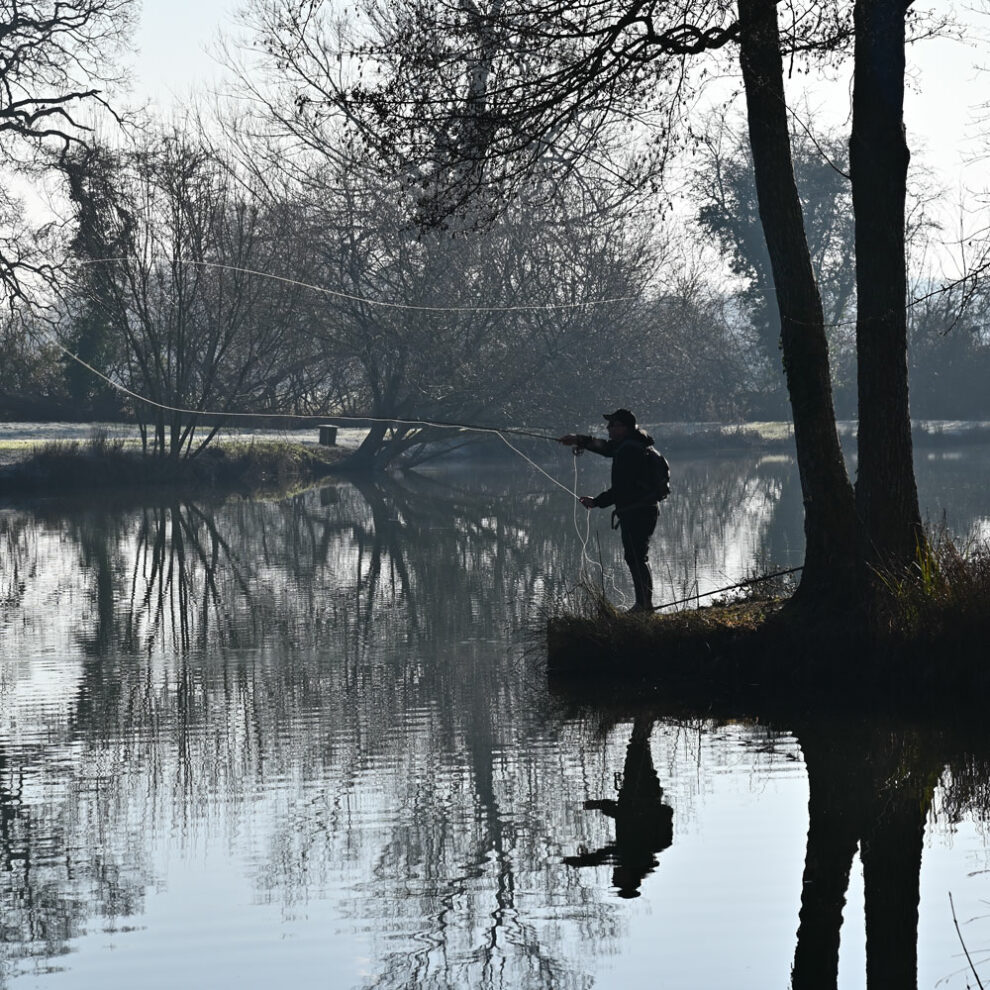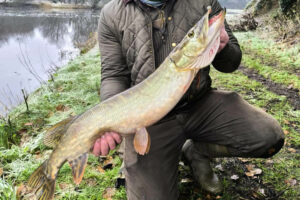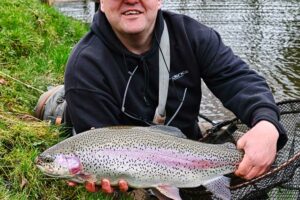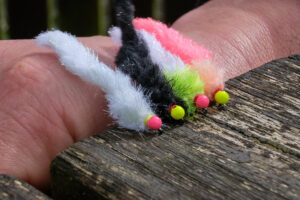Way back when picking a rod for stillwater trout fishing in the UK was pretty straightforward. You had a 9ft 6in #7, and that was just about that. It remains a great all-rounder.
But with the huge range of possibilities in the Cadence Fly Fishing range, do you want an all-rounder or something more specialised? Which rod will be best for you?
Cadence rods in a nutshell
For starters, all Cadence Fly rods are super lightweight. You’ll feel that straight away. And with the ultra-modern Japanese TMesh carbon, you might expect the weight reduction to be counteracted by a loss of backbone. It isn’t. These are proper fishing rods in the hand. A perfect balance of casting, comfort and cushion. It’s cutting-edge stuff.
Some other rods out there are more casting centric. But pretty darn stiff when it comes to playing fish. The Cadence ones aren’t. Put simply, you should lose fewer fish in play – but still be able to cast miles, which is a handy combination.
Think of the action as progressive. Or if it must be categorised, Fast/Medium. They are different in a good way – and becoming more and more popular. You have to try them in the hand to appreciate their versatility fully.
Words on a screen won’t do the rods justice – it is a feel thing.
Main considerations to consider
The first question to ask is, what are you predominantly fishing for?
And by that, I mean, what are 95% of your catch likely to be? No rod in any range will cover every eventuality. Don’t set the task list as “small browns, general rainbows and occasional salmon”, or it will end in tears. Any rod of any weight could land any fish, in theory, but your decision should be based on the bulk of what you expect to catch.
The second question is where and how.
Wild brown trout lochs/upland lakes/loughs
Stick to lighter line weights. The CSM 10ft #4, CSM 10ft #5 and CSM 10ft #6 for bank fishing. With the #4 being the lightest line weight of the three, you would go for this if the water was flat calm or has a light ripple. You’ll have fun playing fish with this rod and feel every movement, but have enough backbone to land plenty of fish in the 4oz to 1lb 8oz range. Typical upland fish.
Should the wind get up, the dandelion fluff four weight line might get blown around a bit too easily. For myself, I’d probably zero in on the CSM 10ft #5 or CSM 10ft #6 as my all round bank rod for wild browns.
And then comes the annoying extra consideration. What if you are boat fishing as well? Many wild waters have a boat tucked away somewhere.
It’s nothing to worry about too much. The sweet spot scale probably slides along a line weight, as the nature of boat fishing means you will be in the more exposed part of the lake and wind will likely have more of an effect than on a sheltered bank. The CSM 10ft #5 and CSM 10ft #6 remain firmly on the list, though. I’d still go for either of them as the best loch rod bank and boat fishing all-rounders.
But there is another consideration in the range that is more boat specific – namely the CSM 11ft #6. Designed by Stevie Munn for the Irish Loughs for maximum dropper control when dibbling droppers off the boat. And they land bigger fish on Corrib and Sheelin than your standard upland brownie. Consider this if you are only going boat fishing on the wild waters, unquestionably. It’s an absolute cracker and very certainly ticks the specialised box.
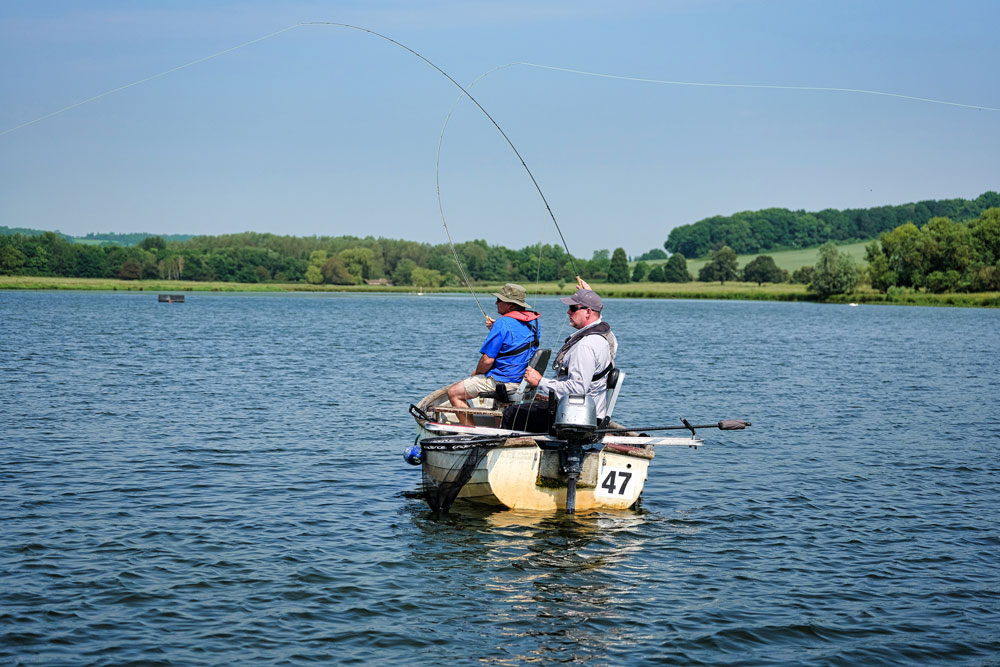
Of course, if all you have is a river rod such as the CSM 9ft #4 or CSM 9ft #5, they’d be good fun on the lochs as well. And absolutely fine if you are having a one-off day on a Highland Loch. And therein lies the key. Don’t beat yourself up overthinking this if you are a once in a while visitor to the wild waters. All trout fly rods will do a job. The fish don’t refuse a fly because it’s not on the ideal rod for the conditions. Even if one might let you enjoy the fight or the cast a little more.
Similar story with the more common CSM 9ft 6in #7 or CSM 10ft #8. They will all work. So don’t go wasting money on buying extra rods if you are just going for wild brownies as a one-off.
Only think about specialist rods if you are likely to find yourself after small browns regularly. But if you live local, or go on holiday regularly in the wild places, get the CSM 10ft #5 or CSM 10ft #6 as your one rod.
Rainbow trout – smallwaters/reservoirs
The bigger the AFTM rating (the # number given after the rod length) the heavier the line. And the heavier the line, the further it can cast and the less it is affected by the wind. This is where many peoples considerations stop. And for good reason. Many anglers on UK Stillwater’s only have #7 or #8 rods and rarely change. If you don’t like to overthink things, stop reading now and pick the CSM 9ft 6in #7, CSM 10ft #7, CSM 9ft 9in #8 or CSM 10ft #8.
If you are absolutely brand new to lake fishing for rainbows in the UK/Ireland and only want one rod, pick the CSM 10ft #8. The heavier line will help you get an extra yard or two on the cast, and you won’t get hampered as much by the wind. And regardless of which rabbit hole you go down in your future fishing requirements – and believe me you will – a CSM 10ft #8 will always have a use and never be wasted money. It may end up being your go-to sinking line rod further down the line, but for starters it will do all you need.
So why am I about to start offering more considerations when a #8 casts so far? Surely, that’s all you require? Why have a rod that can’t cast as far?
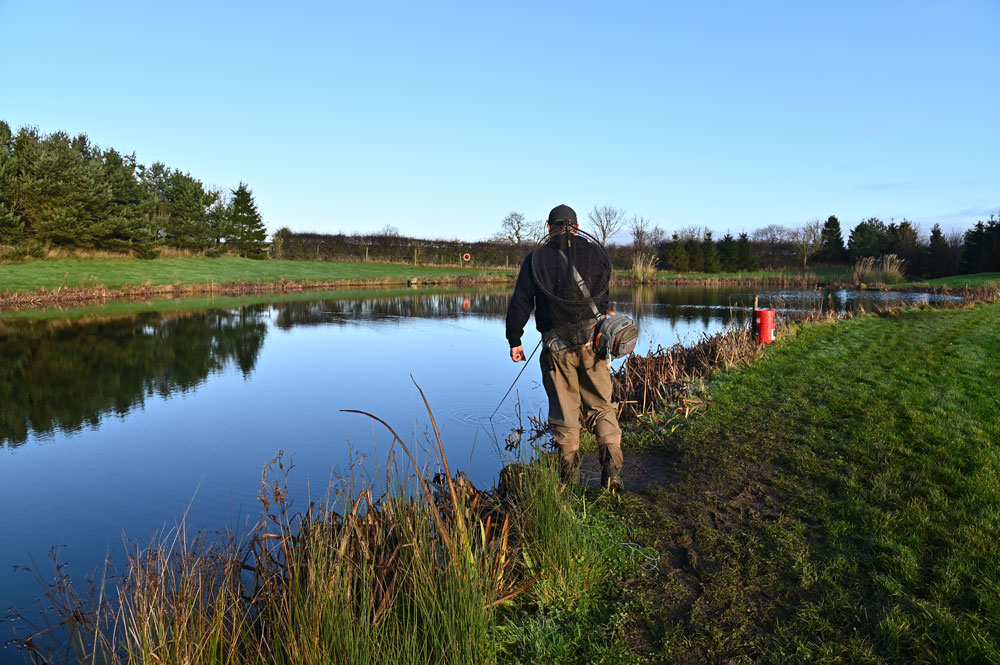
Hook size and tippet strength
This is where we wheel out the term “balanced tackle” in the never ending “which rod” discussion. Getting the balance right is critical.
And here’s why – smaller hooks will only really present properly on thinner tippet. There are many times you have to use a much smaller fly. And you can’t tie a Size 20 Shipman’s to 10lb line. So if you’ve dropped to a more suitable 3lb leader to present such small hooks, the reality is a #8 is probably a little harsh and may result in more breakages when striking.
In general, the lighter and more delicate the tackle on one end, the more delicate the rod should be at the other. So lighter weight rods are a consideration if you like fishing small dries.
Similarly, with bigger hooks and lures – you need to fish a heavier tippet. Meaning, you would want a heavier duty rod.
Put and take fisheries probably demand more specialised needs in a rod, depending on the method and fishery.
For small dries, I’d go without hesitation for the CSM 10ft #5. It’s absolutely superb and is my favourite rod in the entire range. Some may class it as too lightweight, but have a look at the Playing a Fish paragraph in the ideal length discussion below and you might reconsider.
For general dry fly, nymph, and buzzer drifting on a floater or sink tip, go with the CSM 10ft #6.
For lure fishing on sinking lines, the CSM 9ft 9in is unbeatable, but the CSM 10ft #8 is also great.
Which is leading towards the discussion on length of rod and the things you need to consider here. There are quite a few.
Rod length
Cadence do a CSM 10ft #7 and a CSM 9ft 6in #7 – surely there’s not much difference? I’ll use these two rods as an example in what follows, but use the longer/shorter generalisation across the range.
Striking and lifting into a fish
The longer the rod, the quicker you pick the floating line up off the water on the strike. Hundredths of a second make a difference. Fish reject things quicker than humans can think. Just watch them in a fish tank sifting through gravel. It’s split second stuff. So any advantage you can gain in the moment the exclamation mark flashes up in the brain at either end of the rod will help. This applies especially to dry fly and indicator fishing. Or fishing the more static methods. I’d probably err on having a longer rod for floating lines, in summary.
When using sinking lines and pulling lures, we are dealing with a different type of connection. The main point being you would tend to keep retrieving a sinking line until it locks up after the fish turns away. You don’t really strike. So in theory, rod length may not matter as much here.
Casting distance
There appears to be some theories say that the longer the rod, the further it casts. Which kind of makes sense if you had the strength to cast a 40ft telegraph pole with matching line. But you don’t. So casting distance is partially related to strength. And partially related to wind speed and direction, ability and many other factors.
I think the optimal casting rod of the two would be the CSM 9ft 6in for many people. Stronger people may do better with the CSM 10ft. Therefore, casting distance is a little more open to discussion and contradiction in terms of rod length.
The following consideration has a bigger effect on rod length selection, though.
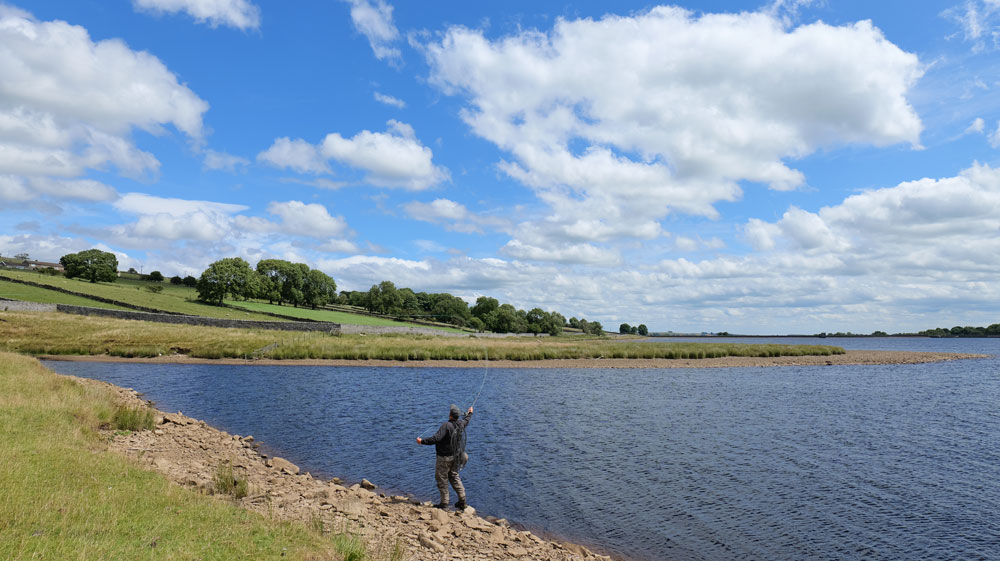
Wind strength
Unquestionably, the CSM 9ft 6in beats the CSM 10ft hands down in a strong wind. Simply down to surface area. It’s one of those things I’ve kind of known for a long time, but on a Cadence Open day at Sharpley Springs, it was hammered home beyond any doubt.
It’s not often you try the two side by side, with the muscle memory from using one so fresh in the memory that you can feel the difference so clearly. The lad in question was deciding between the two rods, and it was a howling gale. The CSM 9ft 6in was so much easier to cast, it was actually eye-opening.
And then a realistic suggestion cropped up – if it’s blowing a gale there is a chance you would open the curtains and go back to bed and this wouldn’t be a consideration. But with every mph increase in wind speed, the better for casting, the shorter rod would get. So you need to consider it.
What is behind you when casting?
If you have high grass behind you on your favourite fisheries, the longer rod will keep your flies a little higher and be less inclined to snag. This is especially important if casting from a sitting position.
If you’re float tubing, you are less likely to hit the water on the back cast from your low down position relative to the lake surface with a longer rod as well.
The longer rod keeps your flies a few inches higher than the shorter one then. But what about trees and the fact a shorter rod would have more chances of sneaking under the branches?
Basically, there is no perfect answer and your decision will be down to your situation and fishery. It’s a consideration whatever the correct answer, though.
Weight of rod
The mind may think there’ll barely be a weight difference when you put a few inches of carbon on the end of a CSM 9ft 6in rod. But here’s the thing – the extra carbon is in the butt section.
It may not sound much, but 108g compared to 103g is a fair difference over a day’s fishing. Especially if you are determined to cast long distances. Or if your joints are deteriorating. Or if you’re not as strong. And especially if you are knackered at the end of each day’s fishing. Go for the shorter rod if these are factors.
This also applies to line weight, by the way. As you go down the line sizes, the rods become lighter. If you fish with #8 rods all the time but finish your day as stiff as a board, start considering lighter line weight on a shorter rod. Perhaps the CSM 9ft 6in #6. It might make fishing more enjoyable again.
Line control
By this, I mean mending a floating line. Or keeping it higher off the water. One of the most overlooked things in fishing. Especially by Stillwater anglers.
If you control the drift better, you will get more takes. Allow the line to drag with the current or the wind, and the fly starts to look a little daft to a lot of fish. So line control, for me, is absolutely crucial. And that’s where the longer rod wins hands down. Which doesn’t mean you can’t control with a shorter rod. It’s just the longer one is more efficient at picking the line up further out and will allow the fly to fish more naturally for a few seconds longer.
The subject of presentation is a different article, but for the purposes of this one, the longer rod is better at it.
Playing a fish
It is my belief that a longer rod tires fish easier like for like with the same line weight. The extra carbon at the butt is more of a resistance combined with the extra weight and is harder to pull against. I’ve heard it said that shorter is better, though, so will qualify this by saying this is my opinion and not that of everyone.
Once upon a time, many years ago, I used an 8ft 6in #5 for the rivers. And occasionally took it onto the lakes for a change with the rainbow trout. The number of times they ran me ragged on this short rod was enough to say it couldn’t be a regular thing, as the fish were in complete control. It was good fun, but completely unreliable and unpredictable for landing fish.
Fast-forward to the present day and the Cadence CSM 10ft #5. I’m landing double figure fish with barely any difference to a 9ft 6in #7. You will get slightly more screaming reels, but the control is much more in favour of the angler than it used to be when five weights were little cocktail sticks. It’s honestly changed my view on fishing lakes to the point I’d happily go with nothing but CSM 10ft #5’s and #6’s for all floating line fishing on nearly all lakes for all methods now.
The only time I would avoid the lighter rod is in heavily weeded lakes. If a fish gets buried in weed, I would rather have an 8 weight as you need a lot more force that can be matched with a heavier tippet. Remember that balance thing?
Below is a video clip of me landing a 14lb Brown at Bankhouse Fishery. That was the CSM 10ft #6. The filming was started a few minutes after the fish was hooked and had started to tire, but I never once worried about the lighter weight rod and always felt in control.
So personally, the longer rod wins for playing fish and has meant I can present a more gentle, fewer fish scaring line than previously able.
Spey casting
This is probably more of a river thing, but the longer rod allows bigger and more controlled loops when single-handed Spey casting in restricted spaces.
Don’t rule out the need for Spey Casting on a stillwater, though. There will be spots on some fisheries you cannot reach with standard overhead casting due to tree and bush proximity. And that means Spey casting is an option to reach fish that previously haven’t been fished for. Watch James Robbins fish Lechlade on our Cadence Fly Fishing YouTube channel to prove that point. It was a fish he simply wouldn’t have caught with standard casting.
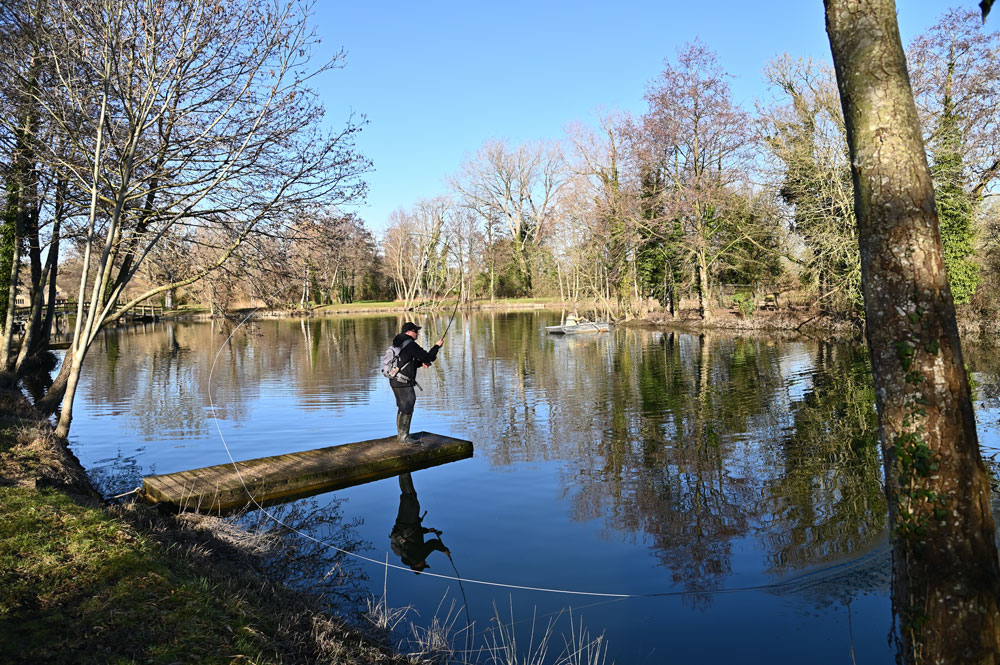
Summary
Choosing the right rod is an impossible task, and you will never make a 100% perfect decision. Accept this as reality and don’t dither.
For me personally, I would go with the CSM 10ft rods every single time for floating line work. I’m more bothered about line control and striking than optimal casting distance or rod weight. You might fish on a windy lake and feel a lighter rod might be the balance for you, so go for that. Everyone will select a different rod for different reasons, so make it a personal choice using the above factors. You won’t be far wrong, and will adapt.
There will always be fish that contradict your thoughts.
The most important point is, don’t overthink and beat yourself up over it. Consider all the factors above and go with your gut.
And remember it’s a balance thing.

